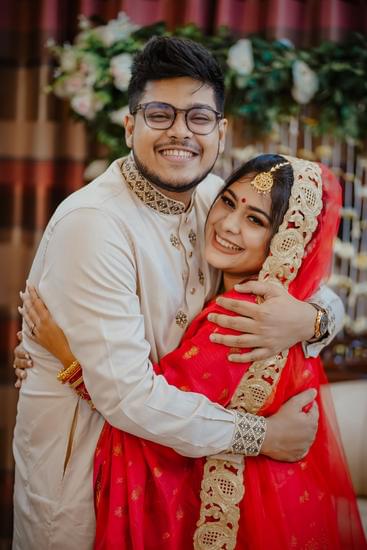Indian weddings are known for their vibrant colors, rich traditions, and elaborate ceremonies that span over several days. One of the most fascinating aspects of Indian weddings is the multitude of ceremonies that are performed, each with its own unique significance and rituals. From pre-wedding rituals to post-wedding customs, Indian weddings are a beautiful fusion of tradition and celebration that have been passed down through generations.
Indian weddings are not just a union between two individuals but also a merging of families and communities. The ceremonies involved in an Indian wedding play a crucial role in symbolizing the sacred bond between the bride and groom, as well as honoring their respective families. These ceremonies hold deep cultural and religious importance, making them an integral part of every Indian wedding.
The number of ceremonies in an Indian wedding varies depending on factors such as regional customs, religious beliefs, and family traditions. While some weddings may involve a few key ceremonies, others can entail an extensive series of rituals that can last for days. Understanding the significance of these ceremonies provides insight into the richness and diversity of Indian wedding traditions.
The Significance of Ceremonies in Indian Weddings
Indian weddings are well-known for their extravagance, cultural richness, and elaborate traditions. Each ceremony in an Indian wedding holds deep significance and plays a crucial role in the overall celebration, reflecting the diverse customs and rituals across different regions of India. These ceremonies are not just a series of events but are imbued with spiritual, social, and emotional meanings that hold families together and create lasting memories for the couple.
Preservation of Tradition
One of the key reasons why ceremonies in Indian weddings hold such importance is their role in preserving age-old traditions. From pre-wedding rituals to post-wedding customs, each ceremony is a way of honoring the rich cultural heritage of India. The intricate details, specific practices, and religious elements incorporated into these ceremonies represent the legacy passed down through generations.
Symbolism and Spiritual Significance
Every ritual and ceremony in an Indian wedding has a symbolic meaning rooted in spirituality. Whether it’s the exchange of garlands during the Jaimala ceremony or the sacred fire at the vivah homa, each custom is deeply connected to ancient religious beliefs and serves as a spiritual union between the couple. These ceremonies are not just about celebrating love but also about seeking blessings for a harmonious and prosperous married life.
Community Bonding
Another significant aspect of Indian wedding ceremonies is their ability to bring people together. These events provide an opportunity for family members, friends, and communities to come closer, strengthen their bonds, and celebrate joyously. The collective participation in various ceremonies fosters a sense of unity, support, and shared happiness among all involved. This communal aspect adds to the grandeur and warmth of Indian weddings, making them truly memorable experiences for everyone.
Overall, the significance of ceremonies in Indian weddings goes beyond just tradition; it encompasses spirituality, community bonding, and the preservation of cultural values that have been cherished for centuries.
Main Ceremonies in an Indian Wedding
When it comes to Indian weddings, the richness and diversity of ceremonies are truly remarkable. From pre-wedding rituals to post-wedding traditions, each ceremony holds its own significance and adds to the overall celebration of love and union. In an Indian wedding, there are typically several main ceremonies that make up the entire event.
The main ceremonies in an Indian wedding can vary depending on the region and culture, but some of the most common ones include:
1. Mehendi Ceremony: This pre-wedding ritual involves applying intricate henna designs to the bride’s hands and feet. It is a fun and colorful event where the bride’s female relatives and friends also get their hands decorated with henna.
2. Sangeet Ceremony: This is a musical night of singing and dancing where both the bride’s and groom’s families come together to celebrate. It is a lively event filled with traditional songs, performances, and lots of joyous moments.
3. Wedding Day Ceremony: The actual wedding day is filled with various customs and rituals such as exchanging garlands, circling around the sacred fire, tying the marriage knot (mangalsutra), and taking seven vows (saptapadi) around the holy fire.
These are just a few examples of the many ceremonies that take place in an Indian wedding, each one unique in its own way. The ceremonies not only bring together families but also showcase the vibrancy of Indian culture through various traditions and rituals.
Overall, an Indian wedding consists of numerous ceremonial events that make it a grand affair full of love, joy, music, dance, colors, and meaningful customs. The combination of different ceremonies in an Indian wedding truly makes it a delightfully memorable experience for everyone involved.
Pre-Wedding Ceremonies
Engagement Ceremony
One of the key pre-wedding ceremonies in an Indian wedding is the engagement ceremony, also known as “mangni” or “sagai”. This ceremony marks the formal announcement of the upcoming marriage and is usually a joyous occasion celebrated with family and friends. The couple exchanges rings as a symbol of their commitment to each other, and blessings are given by the elders for a prosperous and happy married life.
Mehendi Ceremony
The mehendi ceremony is a colorful and vibrant pre-wedding ritual where the bride’s hands and feet are adorned with intricate henna designs. This ritual is often accompanied by music, dance, and laughter, bringing together both families in a celebration of love and union. The mehendi not only adds beauty to the bride’s appearance but also symbolizes joy, love, and auspiciousness.
Sangeet Ceremony
The sangeet ceremony is a lively event filled with singing, dancing, and performances by family members to celebrate the union of the couple. It is an evening of pure revelry where both sides come together to showcase their musical talents and express their joy for the upcoming wedding. The sangeet ceremony is an opportunity for both families to bond and create lasting memories before the solemnity of the wedding day.
These pre-wedding ceremonies are just a few examples of the richness and diversity of Indian wedding rituals, each adding its own unique flavor to the overall celebrations. With countless such customs taking place across different regions of India, it’s no wonder that Indian weddings are known for their opulence and grandeur.
Wedding Day Ceremonies
Another important ritual is the Saat Phere or Seven Steps, where the couple takes seven vows around a sacred fire, each vow representing a commitment they make to each other. These vows are taken in the presence of family and friends as witnesses to their marital promises. The Mangalsutra Dharana ceremony follows, during which the groom ties a sacred necklace or pendant, known as a mangalsutra, around the bride’s neck as a symbol of their marital bond.
Additionally, there is also the Sindoor Dan ceremony where the groom applies vermillion red powder to the parting of his bride’s hair, symbolizing her status as a married woman. This act is said to be associated with prosperity and fertility for the couple. All of these ceremonies hold great significance in Indian weddings and showcase the rich cultural heritage of India.
| Indian Wedding Ceremony | Description |
|---|---|
| Varmala (Jaimala) Ceremony | Bride and groom exchange floral garlands |
| Saat Phere (Seven Steps) | Couple take seven vows around a sacred fire |
| Mangalsutra Dharana Ceremony | Groom ties sacred necklace around bride’s neck |
| Sindoor Dan Ceremony | Groom applies vermillion powder to bride’s hair |
Post-Wedding Ceremonies
After the joyous celebration of the wedding day, Indian weddings continue with a series of post-wedding ceremonies that are filled with customs and traditions. These ceremonies play an essential role in bringing the newlyweds together as well as integrating them into each other’s families.
The post-wedding ceremonies in an Indian wedding typically include the following:
- Reception: This is often the first event after the wedding day, where the couple receives blessings and gifts from their family and friends. It is a grand celebration where guests are invited to meet the newly married couple and offer their congratulations.
- Griha Pravesh: In this ceremony, the bride steps into her new home for the first time. She is welcomed by her new family members and performs various rituals to bless her new home and bring prosperity to her married life.
- Vidaai: The Vidaai ceremony marks the departure of the bride from her parental home. It is an emotional moment as the bride says goodbye to her family and begins her new journey with her husband’s family.
These post-wedding ceremonies are steeped in tradition and hold deep cultural significance for both families involved. Each ceremony has its own unique customs that vary based on regional differences within India, showcasing the diversity of Indian culture. These ceremonies serve to unite families, honor traditions, and create lasting memories for everyone involved in this joyous occasion.
Regional Variations in Indian Wedding Ceremonies
Indian weddings are known for their vibrant and diverse traditions that vary from region to region. From the pre-wedding rituals to the post-wedding ceremonies, each part of the country has its own unique customs that make the celebration a truly special and culturally significant event. Depending on the state and cultural background of the families involved, there can be a wide range of variations in how Indian weddings are conducted.
In North India, one of the most common traditional ceremonies is the Haldi ceremony, where turmeric paste is applied to the bride and groom’s skin as part of a beautification ritual. In contrast, South Indian weddings often feature a ceremony known as Muhurtham, which involves tying intricate floral garlands around the couple’s necks to symbolize their union. These regional differences in customs and practices make each wedding a rich tapestry of cultural heritage.
Another example of regional variation can be seen in the post-wedding ceremonies. For instance, in Bengali weddings in East India, there is a custom called Sindoor Daan where the groom applies vermilion powder to the bride’s hair parting.
This act symbolizes her as a married woman and is considered highly auspicious in Bengali culture. Understanding these regional variations adds depth and meaning to how many ceremonies in an Indian wedding because it enhances one’s appreciation for the diverse traditions that exist within the country.
| Region | Distinct Ceremony |
|---|---|
| North India | Haldi Ceremony |
| South India | Muhurtham Ceremony |
| East India | Sindoor Daan Ceremony |
Modern Trends and Adaptations in Indian Wedding Ceremonies
Indian wedding ceremonies have a rich history and tradition, but in recent years, there has been a noticeable shift towards modern trends and adaptations. One of the most significant changes is the fusion of traditional rituals with contemporary elements. Couples are now incorporating personalized vows, unique themes, and modern décor into their wedding ceremonies, creating a perfect blend of old and new.
Another modern trend in Indian wedding ceremonies is the emphasis on environmental sustainability. Many couples are opting for eco-friendly practices such as using biodegradable materials for decorations, choosing locally-sourced and organic food for the reception, and even hosting outdoor weddings to minimize energy consumption. This reflects a growing awareness of environmental issues and a desire to be socially responsible even in the context of a joyous occasion like a wedding.
Furthermore, there has been an increase in destination weddings among Indian couples. While traditional ceremonies are still held in hometowns or ancestral villages, more and more couples are choosing exotic locations for their nuptials.
Beach weddings, mountain retreats, and even international destinations have become popular choices for those seeking a unique and unforgettable way to tie the knot. This trend not only adds an element of adventure to the wedding experience but also allows couples to celebrate their special day in a truly memorable setting.
Overall, these modern trends and adaptations reflect the evolving attitudes of Indian couples towards marriage ceremonies. While honoring age-old traditions, they are also embracing change by infusing innovative ideas that make their weddings truly stand out. These shifts demonstrate that Indian wedding ceremonies continue to remain vibrant and dynamic while staying rooted in cultural customs.
Conclusion
In conclusion, Indian weddings are truly a celebration of the richness and diversity of Indian culture and traditions. The numerous ceremonies that make up an Indian wedding showcase the depth of customs and rituals that have been passed down through generations. From pre-wedding rituals, to the main wedding day ceremonies, to post-wedding customs, each part of the celebration holds its own significance and contributes to the overall beauty of the occasion.
The sheer number of ceremonies in an Indian wedding reflects the importance placed on tradition and family in Indian culture. Each ceremony has its own customs and rituals, often varying by region and community, which adds to the richness of these celebrations. Whether it’s the haldi ceremony in some parts of India or the mehendi ceremony in others, these traditions bring families together and create lasting memories for everyone involved.
As modern trends continue to influence Indian society, we are also witnessing adaptations in traditional wedding ceremonies. While some couples choose to incorporate western elements into their weddings, others are reviving old customs that had faded with time. Despite these changes, one thing remains constant: Indian wedding ceremonies continue to be a vibrant reflection of India’s cultural heritage and rich traditions.
Frequently Asked Questions
What Are the Ceremonies in Marriage of India?
The marriage ceremonies in India are rich in tradition and symbolism. One of the most important ceremonies is the Vivaah Sanskar, which is the actual wedding ceremony.
It involves various rituals like Kanyadaan (giving away the bride), Mangalpheras (circling around the sacred fire), and Saptapadi (taking seven steps together). Each of these rituals holds deep cultural significance and plays a crucial role in uniting the couple as per Hindu traditions.
What Are the Traditional Ceremonies of India?
Traditional ceremonies in India encompass a wide range of cultural and religious practices. Some of these include festivals like Diwali, Holi, and Raksha Bandhan, as well as religious ceremonies like Aarti (offering of light to deities) and Puja (worship rituals).
Additionally, traditional dances such as Bharatanatyam, Kathak, and Odissi also play a significant role in Indian culture, often performed during weddings or other festive occasions. These ceremonies reflect the diversity and depth of India’s cultural heritage.

I have been involved in marriages for over 20 years helping couples and singles understand more about them.





